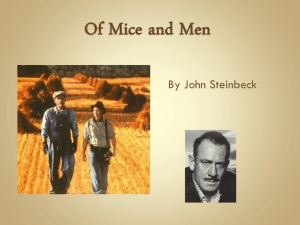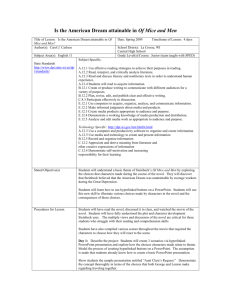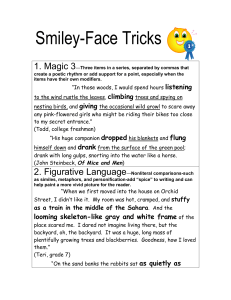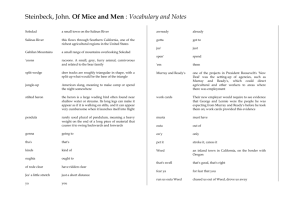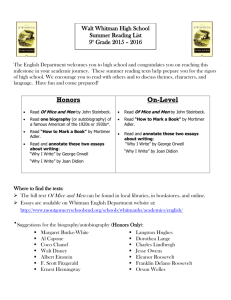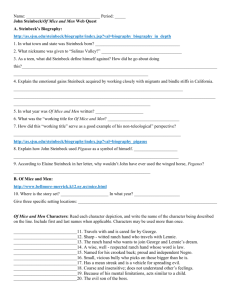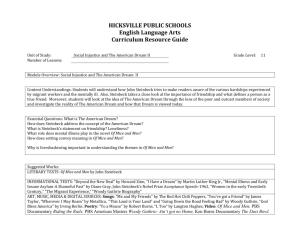Material History in Of Mice and Men
advertisement
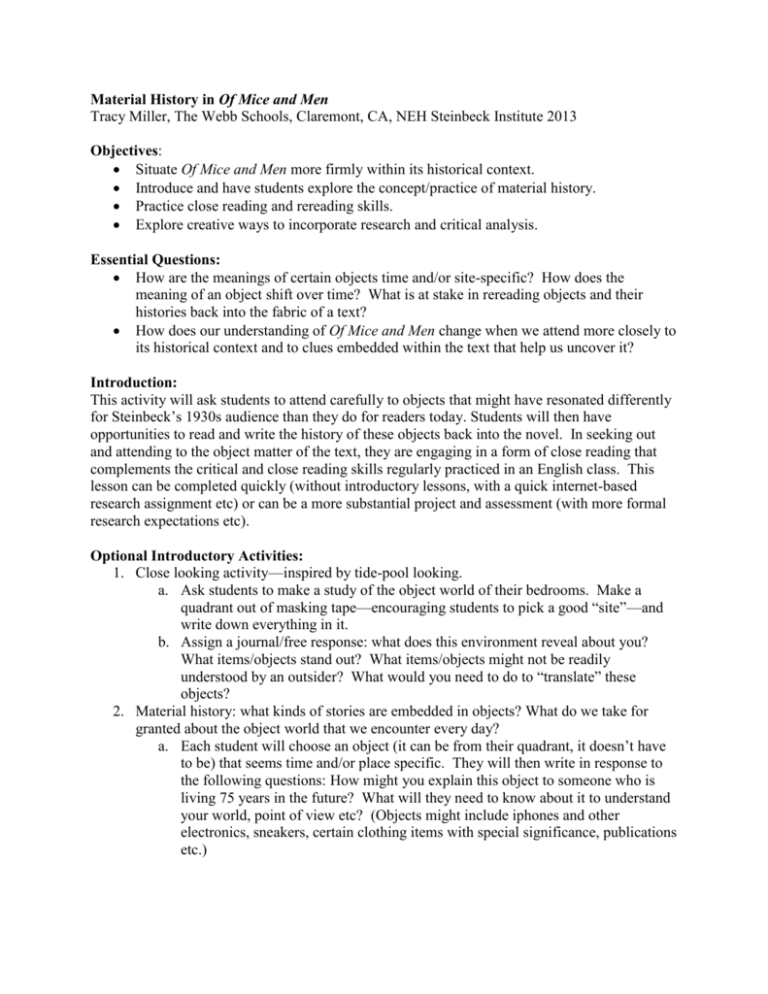
Material History in Of Mice and Men Tracy Miller, The Webb Schools, Claremont, CA, NEH Steinbeck Institute 2013 Objectives: Situate Of Mice and Men more firmly within its historical context. Introduce and have students explore the concept/practice of material history. Practice close reading and rereading skills. Explore creative ways to incorporate research and critical analysis. Essential Questions: How are the meanings of certain objects time and/or site-specific? How does the meaning of an object shift over time? What is at stake in rereading objects and their histories back into the fabric of a text? How does our understanding of Of Mice and Men change when we attend more closely to its historical context and to clues embedded within the text that help us uncover it? Introduction: This activity will ask students to attend carefully to objects that might have resonated differently for Steinbeck’s 1930s audience than they do for readers today. Students will then have opportunities to read and write the history of these objects back into the novel. In seeking out and attending to the object matter of the text, they are engaging in a form of close reading that complements the critical and close reading skills regularly practiced in an English class. This lesson can be completed quickly (without introductory lessons, with a quick internet-based research assignment etc) or can be a more substantial project and assessment (with more formal research expectations etc). Optional Introductory Activities: 1. Close looking activity—inspired by tide-pool looking. a. Ask students to make a study of the object world of their bedrooms. Make a quadrant out of masking tape—encouraging students to pick a good “site”—and write down everything in it. b. Assign a journal/free response: what does this environment reveal about you? What items/objects stand out? What items/objects might not be readily understood by an outsider? What would you need to do to “translate” these objects? 2. Material history: what kinds of stories are embedded in objects? What do we take for granted about the object world that we encounter every day? a. Each student will choose an object (it can be from their quadrant, it doesn’t have to be) that seems time and/or place specific. They will then write in response to the following questions: How might you explain this object to someone who is living 75 years in the future? What will they need to know about it to understand your world, point of view etc? (Objects might include iphones and other electronics, sneakers, certain clothing items with special significance, publications etc.) i. Students can play around with the form of their object histories: they might want to write it as an “it” narrative, from the point of view of the object itself, or as a museum description, encyclopedia entry etc. Of Mice and Men: 1. Assign students an object from the novel (or let them pick their own) and ask them to research its significance within its 1930s context. The extent of this research can vary, students can work in groups or alone etc, depending on the amount of time etc you want to devote to the project. 2. Students will then present a reading of the significance of the object within the world of the text. Here too there are lots of options for creativity: a standard paper, a presentation, a multimedia project, it narrative etc. In addition to turning in a written paper/project, organize a class discussion (Harkness, Socratic Seminar etc) in which students help their peers see/re-see moments in the novel in light of the significance of the object histories they uncover. 3. Discuss ways in which this method might be portable to other texts; return to it throughout the year as a way to ground different texts within their historical contexts. Objects for Inquiry: The Western Magazine (perhaps Western Story or Ranch Romances) Work slips Stetson hats Luger gun California civil code for 1905 “It Narrative” Examples: Mary Mister, The Adventures of a Doll (1816) o http://hockliffe.dmu.ac.uk/items/0180pages.html?page=004 Richard Fenton, Memoirs of an Old Wig (1815) o http://archive.org/stream/memoirsanoldwig00ricgoog#page/n6/mode/2up


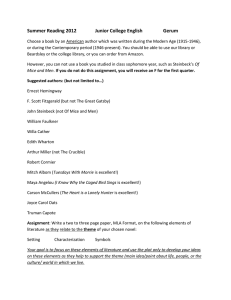
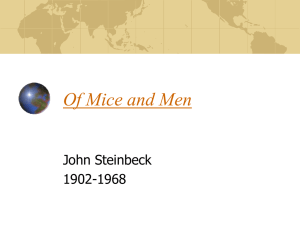
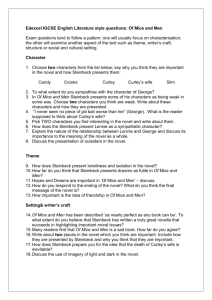

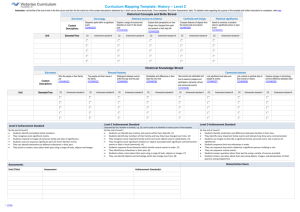
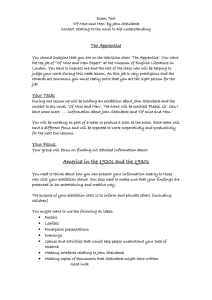

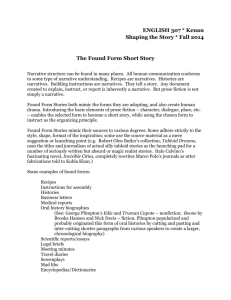
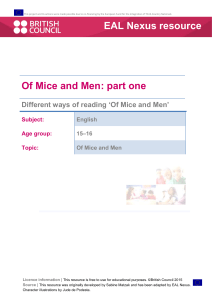



![Historical_politcal_background_(intro)[1]](http://s2.studylib.net/store/data/005222460_1-479b8dcb7799e13bea2e28f4fa4bf82a-300x300.png)
